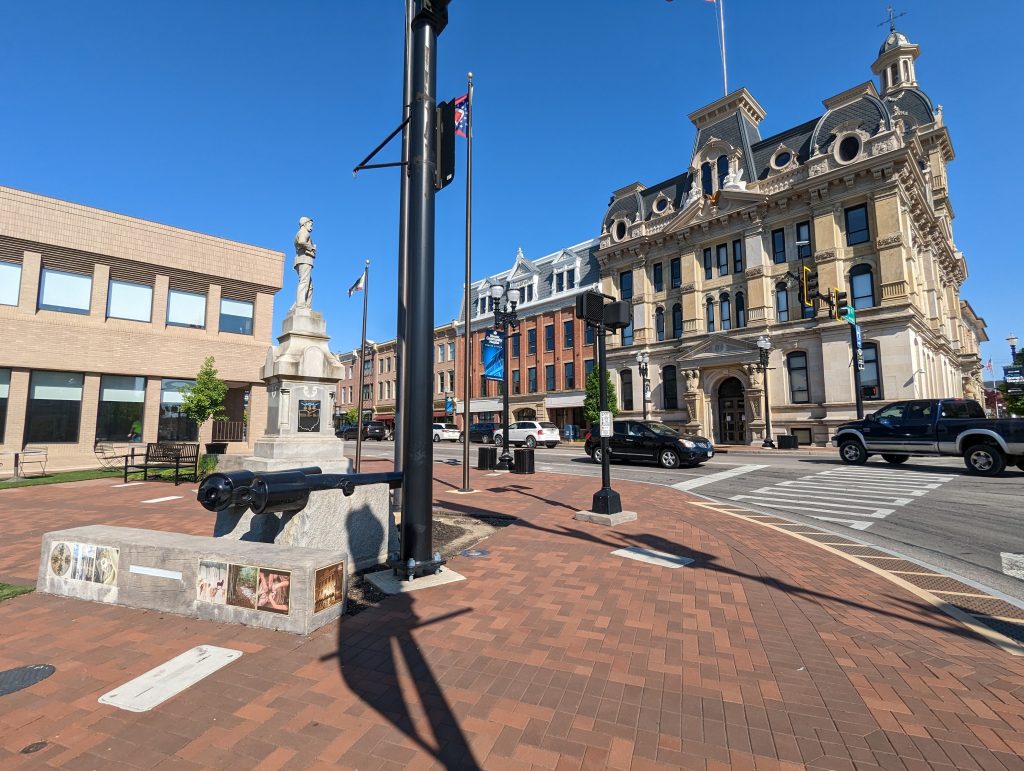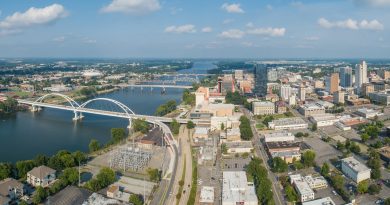Adventures in Wooster, Ohio
Last week began what will be the first of a few actual summer vacations. This first adventure took us to an exotic locale called Wooster, Ohio!
Situated in the heart of The Other Wayne County (named after the same “Mad” Anthony Wayne), Wooster possesses a rich historical tapestry dating back to its founding in 1808. Named after American Revolutionary War hero General David Wooster, the college town has developed a unique character through the years, manifested in its vibrantly preserved heritage buildings and a dynamic demographic base. The town served as a key transportation hub during the canal heyday of the mid-19th century, and in the 20th century, it became recognized for its significant agricultural advancements, particularly through the Ohio Agricultural Research and Development Center (OARDC, an extension of The Ohio State University, as she is properly called).



Wooster offers an interesting study of urban typologies and architectural narratives, ranging from the Second Empire style courthouse at the center of town (pictured above center) to what I’d guess is probably a late 1940s or 1950s era building for the health department (above left). This architectural eclecticism gives the town an intriguing visual identity (and makes for an excellent game of architectural “I spy” when strolling through the downtown area). The College of Wooster has some charming collegiate gothic vibes plus a gorgeous tree canopy that was welcomed on a warm day.

Anytown, USA Vibes, Which Is Why It’s Not
The town has a degree of Any Collegetown, USA vibes, between the jumble of architectural styles, the mom-and-pop stores downtown, and a number of other oddly specific things that don’t exist in every city, but make visiting Wooster feel a bit like coming home to, well, wherever. This list includes: 1) a mostly functional, non-interstate, controlled-access bypass on Route 30 (there was one of these in my hometown of Lancaster, Pennsylvania– and on Route 30, too!); 2) A few modest-sized, sprawling factory complexes– notably e-Pak, close to downtown; 3) a charming park that isn’t quite sure of how to integrate itself in with its urban situation and sits next to a large concrete plant and a wastewater facility, 4) a small college, 5) a giant factory, smack dab in the middle of town, and 6) suburban sprawl that is, at least for now, managed. We saw a lot of this coming into town from the north, where we stayed at a lackluster Hampton Inn (⭑⭑, a bad review I gave for an extremely specific reason).



Wooster’s downtown area is a particular point of interest. With its charming, historic buildings and quaint public square, it is the heart of the community, serving as a center for business, leisure, and civic activities. It’s where the old and new converge, with the meticulously preserved Wayne County Courthouse (1879) standing proudly amidst a lively scene of cafes, boutiques, and restaurants (many of which pride themselves on locally sourced ingredients, a nod to Wooster’s agricultural roots). I picked up a pound of coffee, pastries, and a cup of coffee at Sure House, which is a cozy, brightly-lit venue for a quick snack just off the square (⭑⭑⭑⭑⭑).

The town provides an array of leisure activities for visitors. A vibrant arts scene, with institutions like the Wayne Center for the Arts and the Ohio Light Opera, offers an enriching cultural experience. Nature enthusiasts can explore the picturesque Secrest Arboretum, part of OARDC, which boasts more than 2,000 plant species spread across its 120 acres. And of course, no visit to Wooster would be complete without a trip to the Local Roots Market & Café (⭑⭑⭑⭑⭑), a year-round market co-op and gift shop. I picked up some exotic flavors of pretzels (speaking of my Pennsylvania roots). By this time– especially after chasing our newest family member, Churro, around the dog park, and making sure he didn’t escape through one gap in the fence- I was beat and ready for yet another cup of coffee, this time at Boo Bear’s Brew (⭑⭑⭑⭑⭑), connected to Local Roots.
Wait– what is this map- wait a minute, I thought this article was travel writing! What are you–

The Urban Future of Wooster?
Ah! You thought I was going to make it through a whole article without talking about the prospects of higher-density urban development? Reader, please! Ye of little faith! Anyway, while Wooster embraces enough of the rolling verdant hill charm that defines the topography and urban typologies of this region to avoid being blanketed exclusively in parking lots (there is no economic logic behind this, but there are a lot of parts of this Ohio that are just gorgeous and I really think it’s a product of people developing strip malls in the flatlands as an alternative where land is much cheaper), it’s got a ways to go.
Most of the parking downtown I encountered was free parking. This means a few things. First, it means that the land use isn’t remotely optimized. Second, it means that the city is subsidizing free parking. And third, importantly, it means that some bozo is eventually going to throw a hissy fit when demand increases to the point that the city fathers begin to consider that we might want to start charging for parking. They should do this now, obviously, but they should also focus on converting the ample parkingscape in the town to– wait for it- buildings.

Personally, I would love to live in a town like Wooster. But the things that are going to make places like Wooster vibrant, interesting, and prosperous for years to come are the things that these towns have, by and large, ignored, not for any other reason than because low real estate prices doesn’t exactly drive aggressive (or progressive) densification. But as I always say, people are going to build– the question is whether you want them to build out (sprawl) or up (cities). The first option creates externalities in the form of traffic and higher infrastructure costs. The latter relies on infrastructure that already exists, and it creates new businesses, new demand for products, new labor, and, overall, builds a more sustainable city. Cities like this can modernize their development paradigm and still maintain the good vibes of small town America. But they cannot afford to stand still, especially against the tidal forces of suburbanization that continue to challenge downtown growth.





